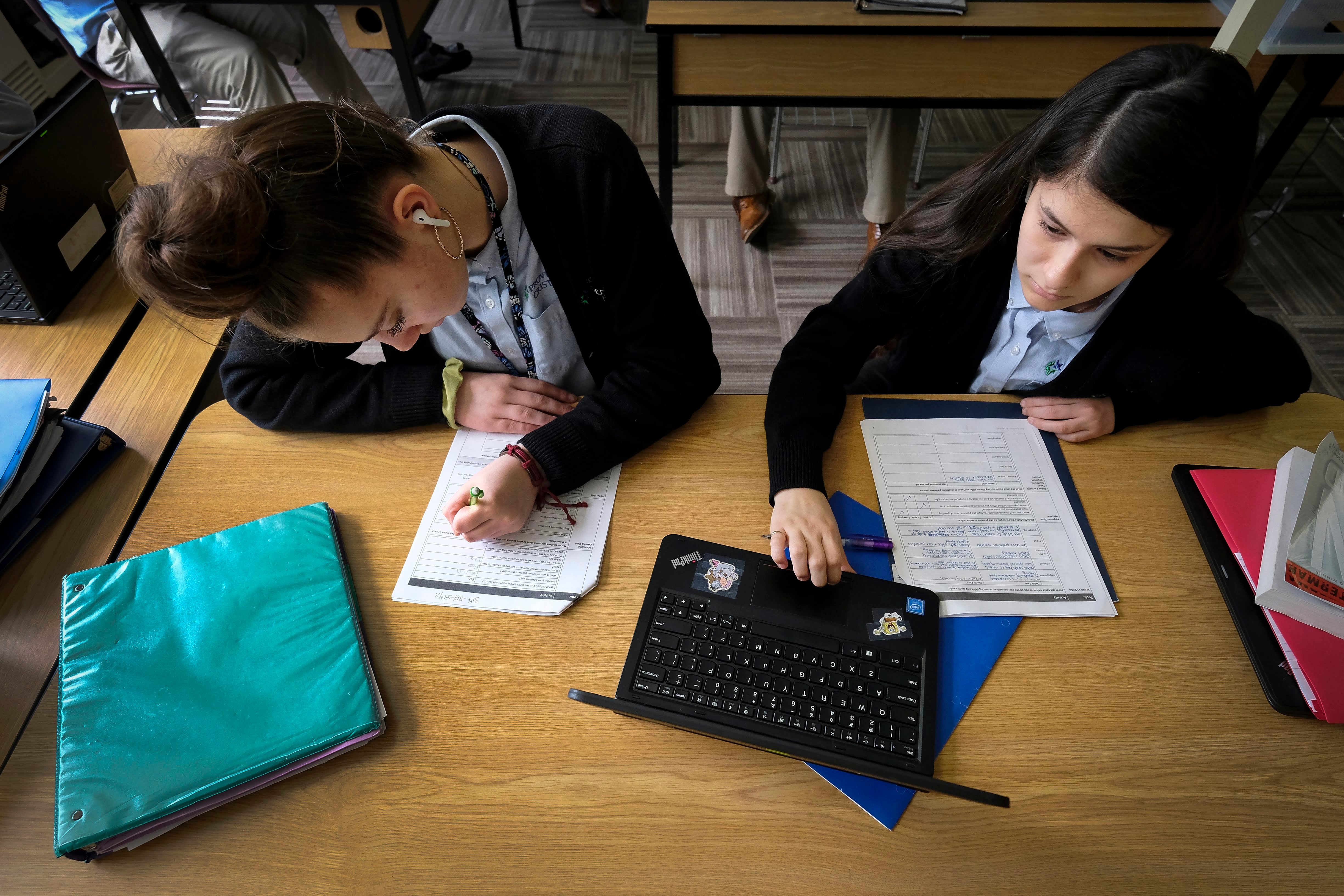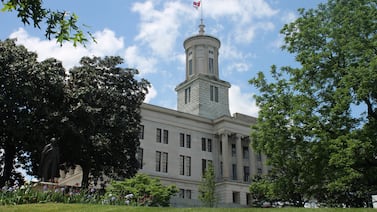On private school choice, more states are going big and bold.
In Indiana, the Republican-controlled legislature last month approved a massive expansion of the state’s voucher program, making nearly every student eligible to receive public money to attend private school. Just days later, South Carolina followed suit, creating a taxpayer-funded program to cover private school tuition and expenses for thousands of students.
They join four other Republican-led states — Arkansas, Florida, Iowa, and Utah — that have established or expanded private school choice programs just this year. Now, more than 30 states, plus Washington, D.C. and Puerto Rico, give students public money to attend private school — a number that could keep growing as state lawmakers push dozens more bills to subsidize the cost of private education.
But it isn’t just the number of bills that’s ballooning — it’s also their scope. Unlike past programs, which often targeted low-income families or students with disabilities, the newest ones are open to almost everyone and often allow parents to use the tax dollars for private school or home-school expenses.
Indiana’s newly expanded program is a prime example. Higher-income families can now participate, and students no longer must meet other need-based criteria. As a result, roughly 97% of students will now qualify for private school subsidies, and the state projects that participation could soar by nearly 42,000 additional students within two years.
Bigger programs mean steeper costs. In Indiana, the program’s price tag is expected to nearly double over the next two years.
Private school choice laws surged during the pandemic as conservative lawmakers seized on many parents’ frustration with school shutdowns and mask mandates. Republicans have also used “parents’ rights” rhetoric to justify the laws, arguing that they empower families who are dissatisfied with the public school system to opt out.
Critics have been alarmed by the wave of legislation, which they say deprives public schools of much-needed resources and could promote discrimination against LGBTQ students or those with disabilities, who have fewer protections in private schools, the majority of which are religious. Plus, experts said they wonder about the segregation that could occur among students when it comes to race, income levels, and academic ability.
But school choice advocates are celebrating the bills as the culmination of a decades-long campaign to give every student the option of a publicly funded private education.
“We hailed 2021 as the year of educational choice,” Robert Enlow, CEO of the Indianapolis-based EdChoice, a school choice advocacy group, said in a statement. “Now we are celebrating 2023 as the year of universal choice.”
As these programs proliferate, here’s what to know about eligibility and costs:
New school choice laws vastly expand voucher eligibility
The latest voucher programs are open to nearly every student.
The move toward universal eligibility reflects a sweeping new rationale for private school choice. Once pitched as a lifeline for students whose needs weren’t being met by traditional schools or whose families couldn’t afford private tuition, proponents increasingly argue that every parent should decide how to spend the tax dollars allotted for their children’s education.
It becomes a “universal entitlement program,” said Joseph Waddington, an associate professor at the University of Kentucky at College of Education and Martin School Public Policy and Administration. Rather than target the neediest students, he added, the new programs are “just putting the money in kids’ backpacks” and letting parents decide how to spend it.
John Elcesser, executive director of the Indiana Non-Public Education Association, argued that the shift is part of a “re-thinking of how we fund education in general.”
“For the first time in the history of American education policy, states are embracing the ‘money follows the child’ model of education funding that has long been the dream of parental-choice advocates,” Nicole Stelle Garnett and Richard W. Garnett wrote in an article in the right-leaning City Journal this year.
Arizona put this new philosophy into practice last year when it made every parent eligible to receive about $7,000 in state funds, or 90% of the cost to educate a student without disabilities in a public school, to use for private school tuition, tutoring, or homeschooling.
This year, six more states made all or most students eligible to attend private school at taxpayer expense. (West Virginia established a near-universal program in 2021.)
In Indiana, a family of four with an income of up to $220,000 now will qualify for taxpayer-funded tuition assistance. Lawmakers also eliminated other restrictions, including rules that voucher recipients have a disability or are in foster care.
But it’s hard to say if the voucher expansion will lead to large numbers of new students enrolling in private schools. In both Iowa and Indiana, analysts expect that nearly 90% of voucher recipients will be current private school students or kindergarteners entering private school.
“I don’t know if we are going to see a rapid expansion,” said Christopher Lubienski, professor at the Indiana University School of Education and director of the Center for Evaluation and Education Policy.
Plus there are limitations on enrollment, such as the capacity of non-public schools and tuition that exceeds the stipends parents receive, as well as students’ access to private schools in rural areas.
Critics, including many Democrats and teachers unions, say the new universal voucher programs amount to a giveaway for families who already can afford private school.
Costs will soar as the programs expand
As newly eligible families apply for vouchers, costs will surge. But by how much, no one knows.
One reason for the uncertainty: Universal vouchers are, in effect, a grand experiment states are conducting in real time. Budget analysts have scrambled to predict the programs’ eventual price tags, but they can only guess at how many freshly eligible families will participate.
Another complication is that lawmakers in some states scrapped enrollment caps when they expanded eligibility, turning the cost ceiling into a question mark.
The uncertainty has led to wildly divergent estimates. In Florida, the Republican lawmaker who sponsored the universal voucher bill pegged the program’s expected cost at about $210 million, while the left-leaning Florida Policy Institute put it at $4 billion. Later, the Florida Senate came up with its own cost estimate: $646 million.
One big point of contention is what percentage of families who currently pay for private school will start using vouchers to cover tuition. The bill’s sponsor guessed that only 50% will apply, which critics called a wild under-estimate. By contrast, the Florida Policy Institute assumed that 100% of eligible private school families will apply.
In Arizona, participation — and price — have far exceeded expectations.
Last June, the legislature estimated that the expanded voucher program would cost about $33 million this school year. But six months later, after applications from newly eligible families flooded in, the expected cost had soared to $276 million — more than eight times the original estimate. The cost has continued to rise as even more students enroll.
As in other states, a large share of the voucher recipients already attend private school or home-school. (When Arizona expanded access last year, 75% of the first wave of applicants had never attended a public school.) For those students, the state cannot simply transfer funds from public to private schools — it must find a whole new pot of money to cover tuition that parents previously paid for.
Now, Democratic Gov. Katie Hobbs is looking to scale back the program, which she warned “will likely bankrupt this state.”
In Indiana, the state previously set aside $240 million annually for private school vouchers. But with the move to near-universal eligibility, the cost is expected to swell to more than $600 million by 2025.
That amount is eye-opening, said Lubienski, who added that it also follows a pattern of shifting costs to taxpayers. While Indiana lawmakers did increase funding for traditional public schools in this year’s legislative session, the lion’s share of attention and largest funding increases went to voucher and charter programs, he said.
School choice advocates stressed that the cost depends on how many students enroll, but others argued that the money allocated to vouchers amounts to the state endorsing private education.
In the wake of her state’s voucher expansion, Indiana state Sen. Andrea Hunley, a Democrat, said she worries about having enough money for the majority of Indiana’s students who attend public schools, especially those who are English language learners, in special education, and from low-income backgrounds.
“Our kids can’t wait to be properly resourced,” she said.
Patrick Wall is a senior reporter covering national education issues. Contact him at pwall@chalkbeat.org.
MJ Slaby oversees Chalkbeat Indiana’s coverage as bureau chief and covers higher education. Contact MJ at mslaby@chalkbeat.org.




